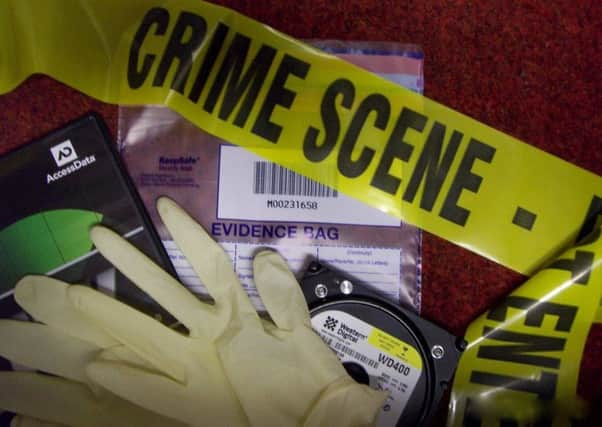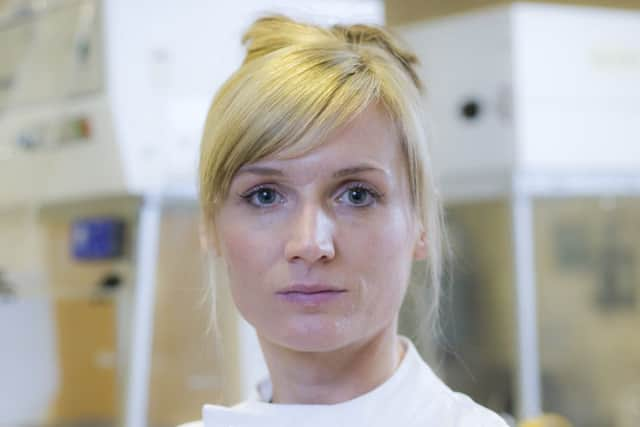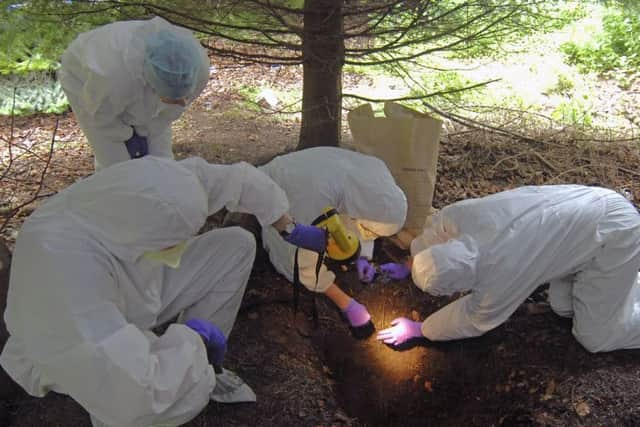CSI: Fife: the fascinating work of a local forensic biologist


A TV documentary about real life cases that had been solved by forensic science initially sparked her interest.
She explained: “At that time it wasn’t about DNA but blood pattern analysis.
Advertisement
Hide AdAdvertisement
Hide Ad“The case that captivated me involved a man who had murdered his wife and then injured himself to make it look like they had both been attacked in their home.


“The scientists looked at the blood patterns in the house and concluded it had been staged.
“I was fascinated and decided that was what I was going to do.
“A couple of years after I started working as a forensic scientist I attended a training course on blood pattern analysis and the trainers were the two scientists who had appeared on the TV programme all those years ago – I was star struck!”
Advertisement
Hide AdAdvertisement
Hide AdCarol, who grew up in Burntisland, has worked as a forensic biologist for the past 19 years. She started in April 1998 with Strathclyde Police and now works at the Scottish Crime Campus in Gartcosh, Lanarkshire.


She works on crimes ‘‘against the person’’ which are serious violent crimes such as murder and attempted murder, as well as serious sexual crimes, including rape.
The former Balwearie High pupil said: “As I am a biologist the main technique is DNA analysis,” she said.
“DNA has completely revolutionised forensic science. However, there are many other elements within forensic science – some new, some not so new – such as fingerprint analysis which has been around for 100 years, but is as valuable today as it was back then.
Advertisement
Hide AdAdvertisement
Hide Ad“Forensic science is an important part of the criminal justice toolkit but it alone cannot solve a crime.


“We work closely with our partners in Police Scotland and the Crown Office and Procurator Fiscal’s service to secure a conviction.
“DNA analysis allows us to identify who could be the source of biological material.
“This could be blood at a crime scene, semen on a rape victims’ clothes or skin on the handle of a murder weapon. The DNA techniques we use are so sensitive that we can obtain DNA profiles from less than one billionth of a gram of DNA. That’s just a few body cells.
Advertisement
Hide AdAdvertisement
Hide Ad“DNA is very important for two reasons – firstly it is so sensitive that we can obtain profiles from tiny amounts of biological material whereas with more traditional methods we needed a lot of material.


“Also DNA is very discriminatory, for example before DNA we used blood grouping. A common blood group might be found on 36 per cent of the population.
“The chance of getting a DNA match between individuals is more than one in a billion.”
The most infamous case Carol worked on was the murder of Polish student Angelika Kluk.
Advertisement
Hide AdAdvertisement
Hide AdShe said: “This was difficult because it was the senseless murder of a young girl but it was also difficult from a crime scene point of view as her body had been hidden beneath the floor- boards of a church.
“So the crime scene was very dark and cramped and I had to work beneath the floor boards for several hours.
“It was worthwhile as the evidence we recovered at the crime scene and in the laboratory played a crucial role in the conviction of Peter Tobin. This investigation led to the realisation that he was a serial killer.”
The processes of forensic biology are very meticulous and accuracy is crucial.
Advertisement
Hide AdAdvertisement
Hide Ad“Some of these processes will take time – it’s not like CSI where everything is solved in an hour!” Carol explained.
“The process of obtaining a DNA profile will take several hours and it can take a long time to examine items carefully to ensure all trace evidence is recovered.
“Examinations can involve several different disciplines within forensic science working together, for example biology, chemistry and toxicology.”
The 43-year-old said her job can be stressful, but, despite this, she gets a lot of satisfaction from it.
Advertisement
Hide AdAdvertisement
Hide Ad“If you are working on a big murder enquiry you have to work the hours to make sure the evidence is recovered quickly,” she added.
“But I love my job. Every day is different and it can be incredibly rewarding.”
Importance of forensic science
Carol has worked on thousands of cases where DNA has been crucial in the conviction, from house breakings and car theft to rapes and murders.
Carol described one case where forensics identified the murderer in a few months. The victim had been sexually assaulted and murdered. “Initially, there was very little for the police to go on. We recovered semen from the victim’s body and obtained a DNA profile. We checked it against the DNA database but didn’t get a match. After some excellent detective work, the house of a potential suspect was identified. We obtained a DNA profile and it was a match. He was subsequently convicted of murder.”